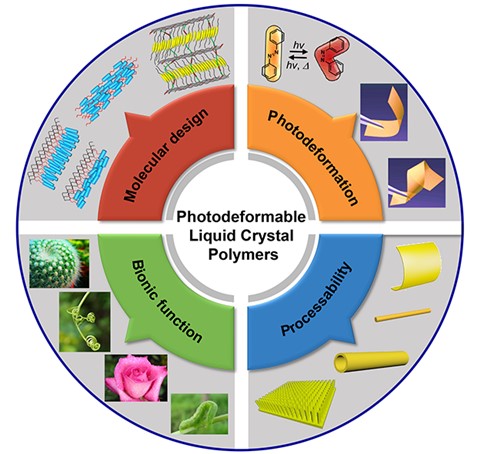Search
The creation of smart materials by imitating the biological stimulus response behaviors (e.g., the phototaxis of animals, the wettability of plants, etc.) represents one of the important directions for the development of new functional materials, and is expected to apply in life & healthcare, aeronautics & astronautics, military detection and other areas. Liquid crystal elastomers offer excellent synergy and flexibility of polymer networks; when stimulated by external fields (heat, electricity, magnetism, light, etc.), they develop anisotropic changes in shape (size) by changing the mesogen arrangement. Compared with other stimulating patterns, light drive has been frequently brought into focus thanks to its favorable controllability, remote fixed-point operation, and zero requirements for operating environments. Light-responsive liquid crystal polymer normally contains molecules or functional groups capable of absorbing light energy. It develops certain physical or chemical reactions because of light, which brings about a series of changes in structure and shape corresponding to specific functions. Azobenzene derivative is the most extensively studied light-responsive group; its cis-trans isomerization is available under the action of light. The change in molecular structure caused by photochemical reaction could be further magnified by the synergistic effect of mesogen to macroscopic deformation of material.
In the past few days, our group highlighted the important history and trend of development of azobenzol group-containing photodeformable liquid crystal polymers and the flexible actuators fabricated thereof over past 10+ years, and gave close attention to the new idea of device functionalization based on bionic design. Related papers were published online in Advanced Materials, an authoritative journal of the material science.
This review article has received extensive attention from various academic platforms, including the official platform of Materials Views China, who gave a special report on it.








